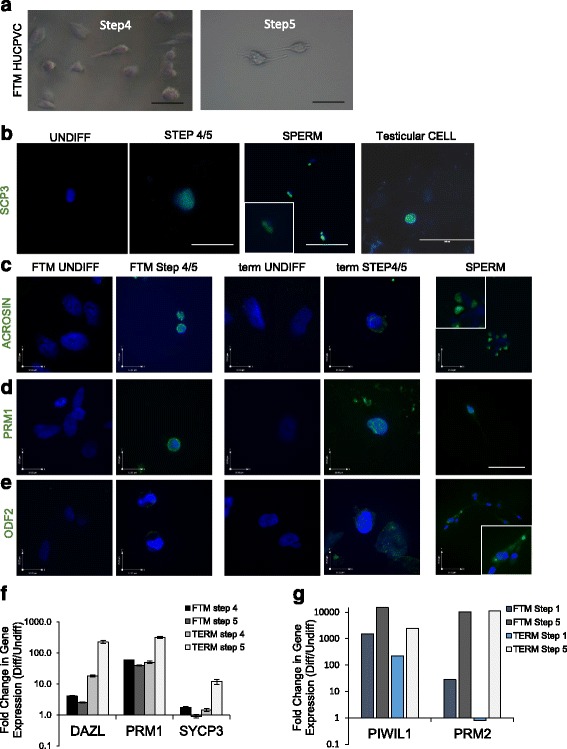Fig. 6.

Second stage spermatocyte- and spermatid-associated markers are upregulated in first trimester (FTM) human umbilical cord perivascular cells (HUCPVCs) and term HUCPVCs at Step 4 and Step 5. a Bright field representative micrographs of FTM HUCPVCs at Step 4 and Step 5 of the differentiation protocol. b Representative micrograph of undifferentiated (UNDIFF) HUCPVCs (negative control) immunostained for SYCP3 (green, undetected) and counterstained with Hoechst to show live nuclei. SYCP3 (green) was detected in and Step 4 and Step 5 (showing term at Step 5). Spermatozoa (SPERM) were used as a positive control. Scale bars = 100 μm. c–e Representative micrographs of undifferentiated (negative control) and Step 5 FTM HUCPVCs and undifferentiated (negative control) and Step 5 term HUCPVCS immunostained for the spermatid-associated proteins Acrosin, Protamine 1 (PRM1) and ODF2 (green) and counterstained for Hoechst to visualize nuclear integrity. Sperm was used as a positive control. All images are at the same magnification, with scale bars shown, with the exception of insets for sperm markers which were magnified approximately 6 times. f qPCR analysis of differentiated (Diff) FTM and term HUCPVCs at Step 4 and Step 5 showing fold-change of late spermatogenesis marker (DAZL, PRM1, SYCP3) gene expression when compared to undifferentiated HUCPVCs. g qPCR analysis of differentiated HUCPVCs isolated at Step 1 and Step 5, showing fold-change in gene expression compared to undifferentiated cells for early and late spermatogenesis markers PIWIL1 and PRM2, respectively
